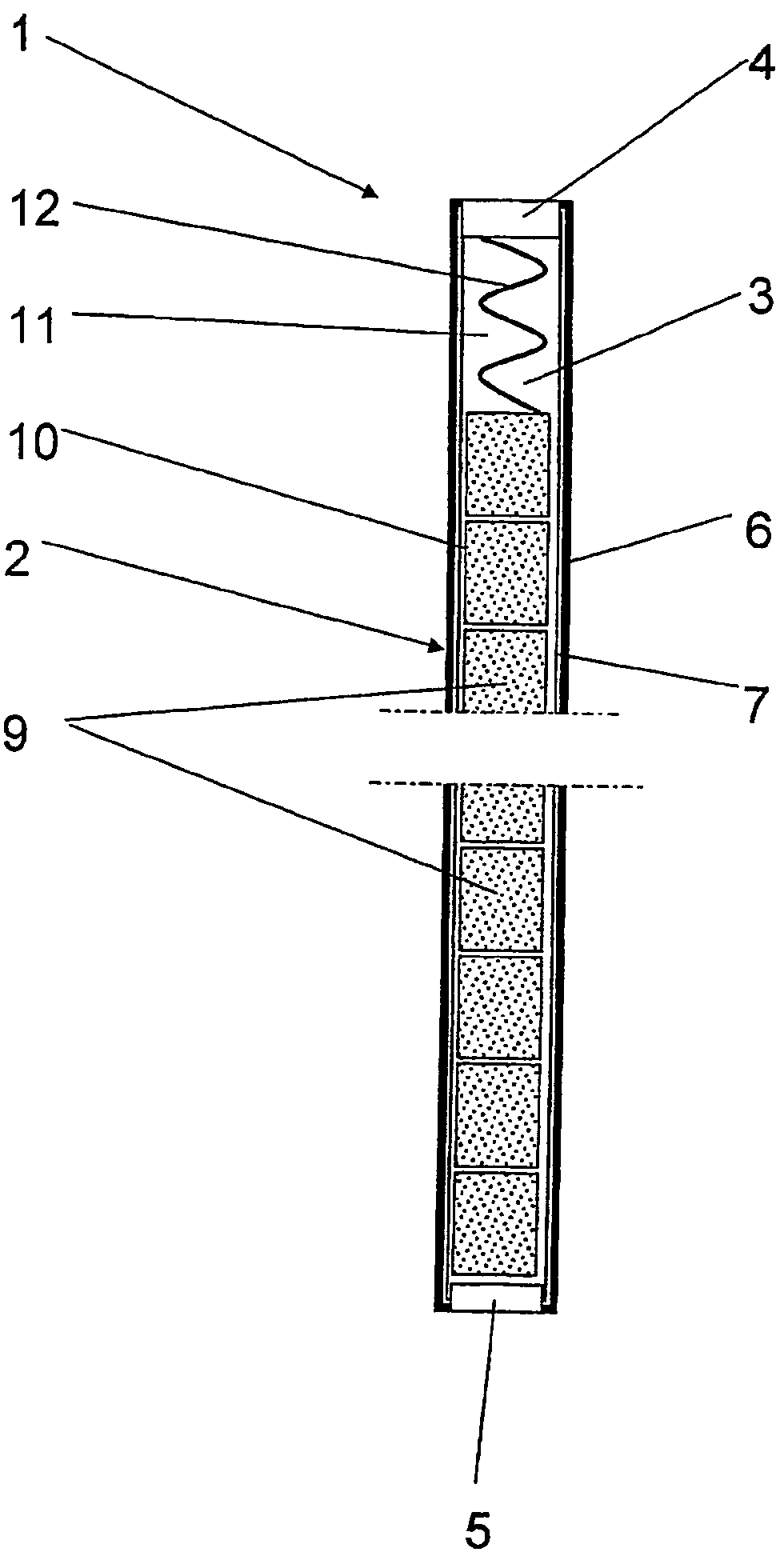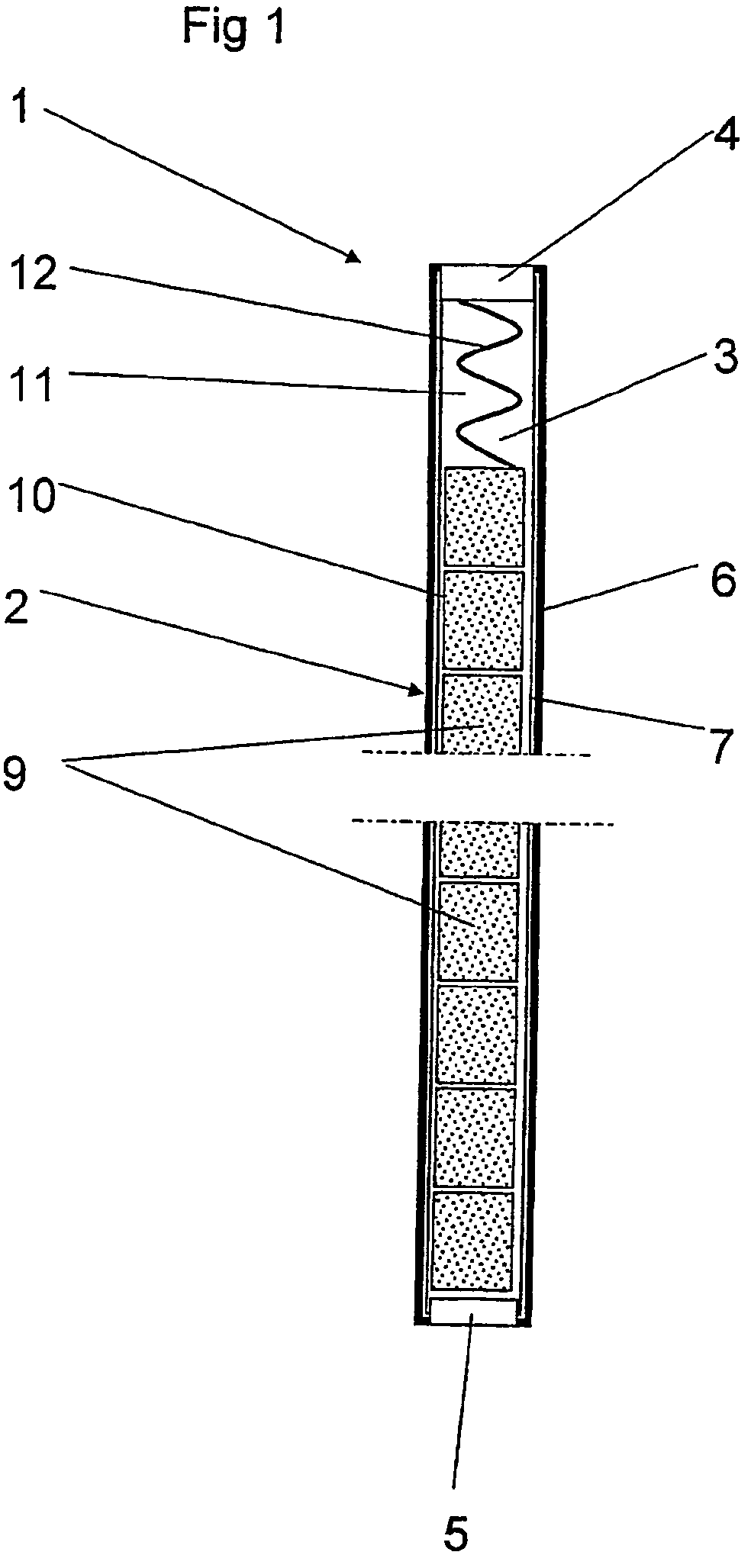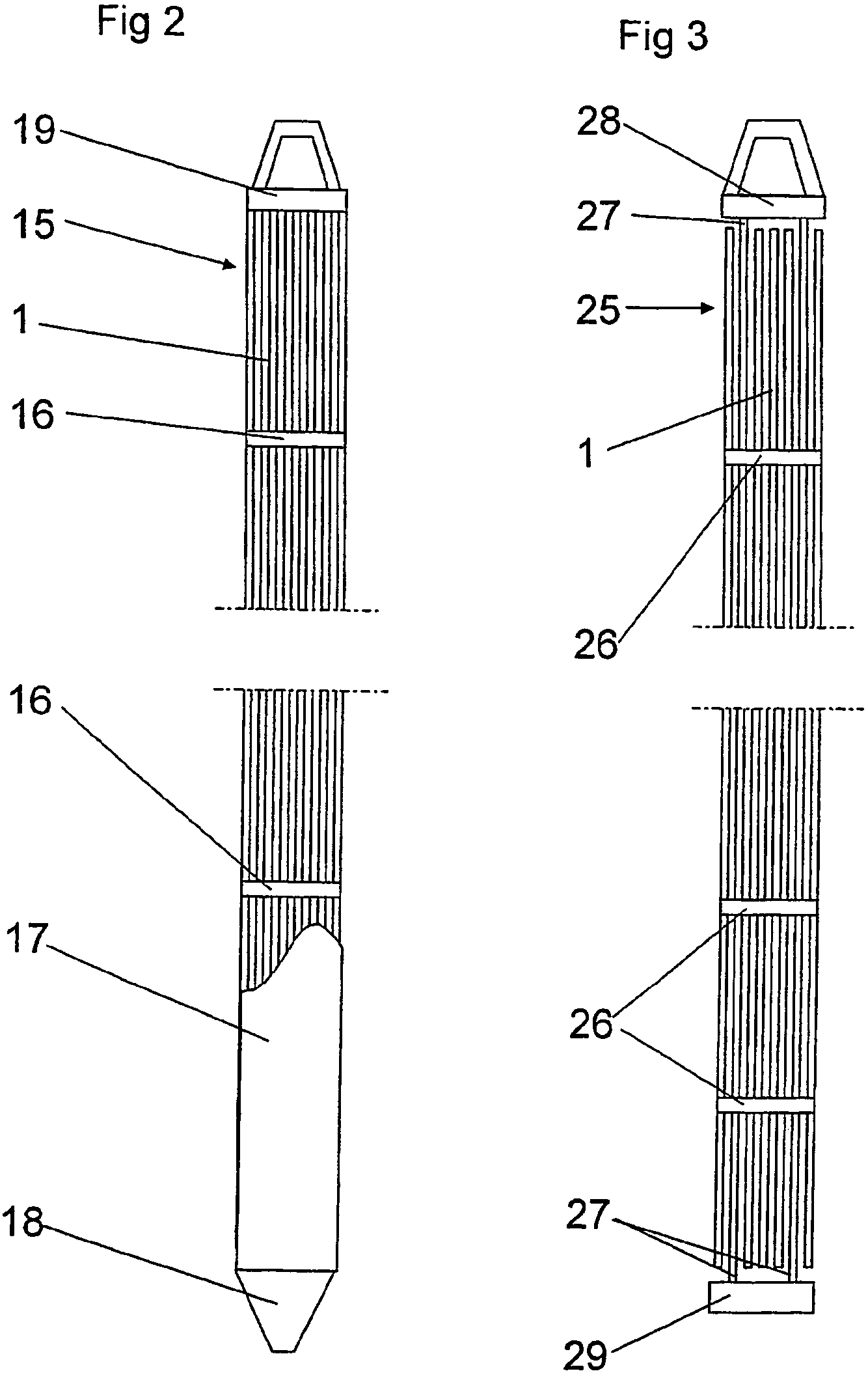Nuclear fuel rod
a technology of nuclear fuel rods and fuel pellets, which is applied in nuclear energy generation, reactor fuel elements, climate sustainability, etc., can solve the problems of increased fission gas emission, worse conductivity between fuel pellets and claddings, and increased temperature of enhanced pellets, so as to reduce the hydrogen absorption of zirconium materials
- Summary
- Abstract
- Description
- Claims
- Application Information
AI Technical Summary
Benefits of technology
Problems solved by technology
Method used
Image
Examples
Embodiment Construction
[0035]FIG. 1 schematically shows a nuclear fuel rod 1 for a nuclear reactor of the light water type. The nuclear reactor can be a boiling water reactor (BWR) or a pressurized water reactor (PWR). The nuclear fuel rods comprise a cladding tube 2 that defines a closed inner space 3. The cladding tube 2 has a first upper end that is concluded with a top plug 4 and a second lower end that is concluded with a bottom plug 5.
[0036]The cladding tube 2 is manufactured from at least one of the materials in the group zirconium and a zirconium-based alloy. Such a zirconium-based alloy can be ZIRCALOY-2 or ZIRCA-LOY-4. In the embodiment shown the cladding tube 2 also comprises an outer tube 6 and an inner tube 7, whereby the inner tube 7 forms a so called liner, that is manufactured so that it has a metallic binding to the outer tube 6. The outer tube 6 can be manufactured from any of the above-mentioned zirconium-based alloys while the inner tube 7 can be manufactured of pure zirconium metal. I...
PUM
 Login to View More
Login to View More Abstract
Description
Claims
Application Information
 Login to View More
Login to View More - R&D
- Intellectual Property
- Life Sciences
- Materials
- Tech Scout
- Unparalleled Data Quality
- Higher Quality Content
- 60% Fewer Hallucinations
Browse by: Latest US Patents, China's latest patents, Technical Efficacy Thesaurus, Application Domain, Technology Topic, Popular Technical Reports.
© 2025 PatSnap. All rights reserved.Legal|Privacy policy|Modern Slavery Act Transparency Statement|Sitemap|About US| Contact US: help@patsnap.com



